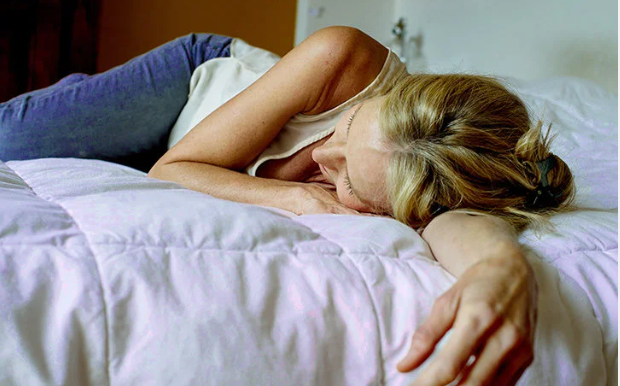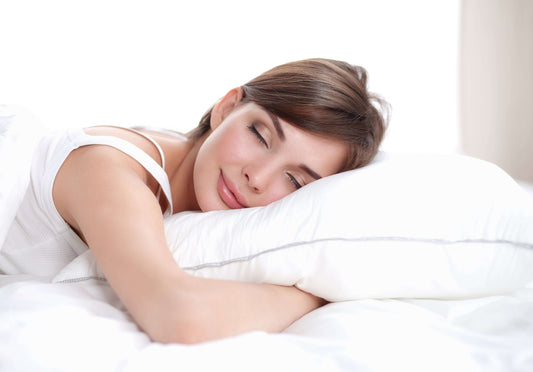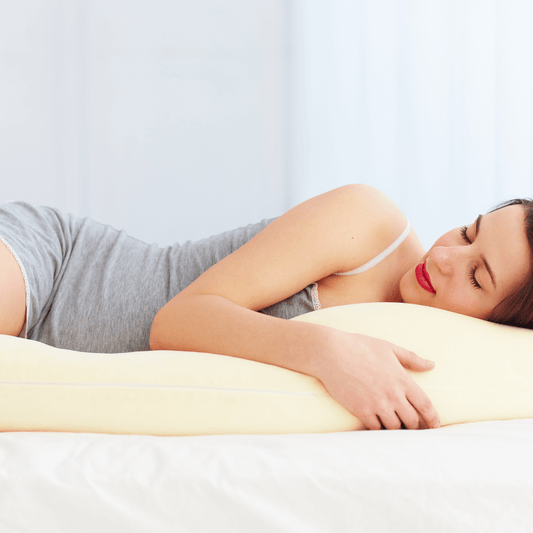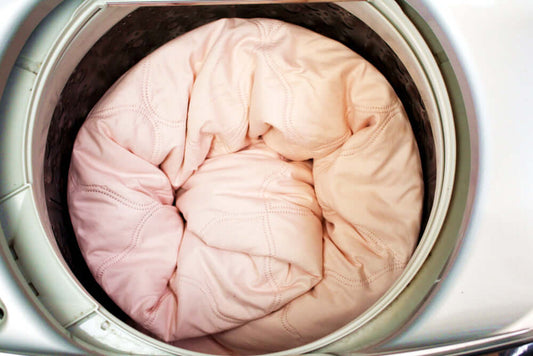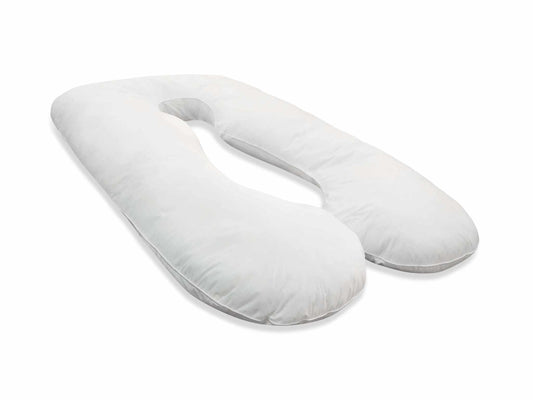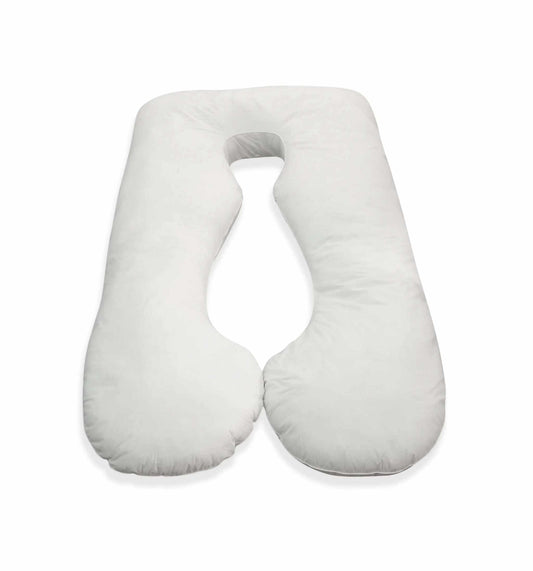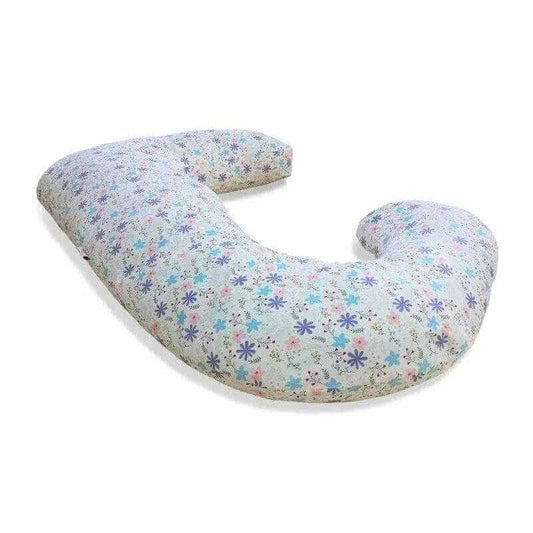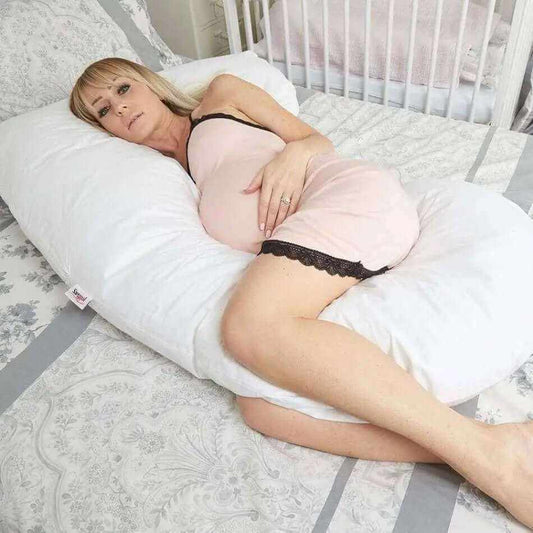In the pursuit of a good night's sleep, many individuals battle against various sleep disorders that disrupt their restorative slumber. From the restless tossing and turning of insomnia to the disruptive pauses of Sleep Apnea, understanding these sleep disorders is crucial for promoting overall well-being. In this comprehensive guide, we'll delve into the nuances of common sleep disorders and explore effective management strategies. Whether you're struggling with insomnia or seeking relief from restless leg syndrome, this resource aims to empower you with knowledge to achieve restful sleep. As you embark on this journey towards better sleep, consider how the right pillow can enhance your sleep environment and contribute to your overall comfort and relaxation.
COMMON SLEEP DISORDERS
INSOMNIA: UNLOCKING THE MYSTERIES OF SLEEPLESSNESS
Insomnia, characterized by difficulty falling asleep or staying asleep, affects millions worldwide. For those wrestling with persistent insomnia, finding effective remedies can be challenging. Insomnia often stems from various factors, including stress, anxiety, lifestyle habits, and underlying health conditions. Addressing the root causes of insomnia is key to developing an effective treatment plan.
How to Manage Insomnia
Insomnia is a multifaceted disorder that often requires a comprehensive approach to management. While medication may provide short-term relief for some individuals, addressing underlying psychological and behavioural factors is essential for long-term success in overcoming insomnia. By adopting healthy sleep habits, seeking professional guidance, and creating a conducive sleep environment with the right pillow, individuals can take significant strides towards achieving restful and rejuvenating sleep.
One approach to managing insomnia is to establish a consistent sleep schedule, aligning your bedtime and wake-up time to regulate your body's internal clock. Creating a calming bedtime routine, such as reading or practicing relaxation techniques, signals to your body that it's time to unwind and prepare for sleep. Additionally, optimizing your sleep environment with a supportive pillow that cradles your head and neck can alleviate discomfort and promote relaxation conducive to sleep.
In addition to lifestyle changes, cognitive-behavioural therapy for insomnia (CBT-I) has emerged as a highly effective treatment option. CBT-I focuses on changing negative thought patterns and behaviours that contribute to insomnia, promoting healthy sleep habits and addressing underlying psychological factors. By combining CBT-I techniques with supportive sleep accessories like ergonomic pillows, individuals can enhance the effectiveness of their treatment and improve sleep quality over time.
SLEEP APNOEA: NAVIGATING THE CHALLENGES OF BREATHING INTERRUPTIONS
Sleep apnoea is a common sleep disorder characterized by pauses in breathing or shallow breaths during sleep. These interruptions in breathing can last from a few seconds to minutes and can occur multiple times throughout the night, disrupting the normal sleep cycle and decreasing the quality of sleep. There are two main types of sleep apnoea: obstructive sleep apnoea (OSA) and central sleep apnoea (CSA). Understanding the causes of sleep apnoea is crucial for diagnosis and treatment.
Primary Causes of Obstructive Sleep Apnoea (OSA) and Central Sleep Apnoea (CSA)
1. Obstructive Sleep Apnoea (OSA):
Obstruction of Upper Airway: The most common cause of obstructive sleep apnoea is the relaxation of muscles in the throat during sleep. This relaxation causes the soft tissue at the back of the throat to collapse and block the airway, leading to breathing pauses or shallow breathing.
Excess Weight: Being overweight or obese significantly increases the risk of developing obstructive sleep apnoea. Excess fat around the neck can obstruct the airway and make breathing more difficult during sleep.
Structural Issues: Structural abnormalities in the upper airway, such as enlarged tonsils, a large tongue, or a narrow airway, can contribute to obstructive sleep apnoea.
Age and Gender: Sleep apnoea is more common in older adults and men, although women can also be affected, especially after menopause.
Family History: A family history of sleep apnoea or other sleep disorders can increase the likelihood of developing the condition.
Alcohol and Sedative Use: Alcohol and sedatives relax the muscles in the throat, increasing the risk of airway obstruction during sleep.
Smoking: Smoking can lead to inflammation and fluid retention in the airway, making it more susceptible to obstruction.
Nasal Congestion: Chronic nasal congestion or allergies can make breathing through the nose difficult, forcing individuals to breathe through their mouth and increasing the risk of airway obstruction.
2. Central Sleep Apnoea (CSA):
Central Nervous System Disorders: Central sleep apnoea occurs when the brain fails to send proper signals to the muscles responsible for controlling breathing. This can result from conditions such as stroke, brain tumour, or other neurological disorders that affect respiratory control.
Heart Disorders: Certain heart conditions, such as congestive heart failure, atrial fibrillation, or hypertension, can disrupt the brain's regulation of breathing and lead to central sleep apnoea.
Medications: Some medications, particularly opioids and certain pain medications, can suppress respiratory drive and increase the risk of central sleep apnoea.
High Altitude: Central sleep apnoea may occur at high altitudes due to changes in oxygen levels and respiratory control mechanisms.
In addition to these primary causes, certain lifestyle factors and underlying health conditions can contribute to both obstructive and central sleep apnoea. These factors include untreated allergies, chronic sinus problems, hormone disorders, and a sedentary lifestyle.
How to Manage Sleep Apnoea:
It's essential to consult a healthcare professional if you suspect you or someone you know may have sleep apnoea. A thorough evaluation, including a sleep study, can help determine the underlying causes of the condition and guide appropriate treatment options. Treatment for sleep apnoea may involve lifestyle changes, such as weight loss and smoking cessation, as well as medical interventions like continuous positive airway pressure (CPAP) therapy or oral appliances to keep the airway open during sleep. In some cases, surgery may be recommended to address structural issues in the upper airway and improve breathing during sleep. Diagnosis typically involves overnight sleep studies conducted in a specialized sleep clinic.
Continuous positive airway pressure (CPAP) therapy is a common treatment prescribed for obstructive Sleep Apnoea, which involves wearing a mask connected to a machine that delivers pressurized air to keep the airway open. While CPAP therapy effectively reduces the frequency of breathing interruptions and alleviates symptoms, some individuals may find it challenging to adjust to wearing the mask during sleep.
In addition to medical interventions, lifestyle modifications such as maintaining a healthy weight and sleeping on your side can alleviate symptoms of sleep Apnoea. Choosing the right pillow that provides adequate support and encourages proper alignment of the head and neck can complement these efforts, facilitating improved breathing and uninterrupted sleep.
Central Sleep Apnoea, which involves disruptions in the brain's respiratory control centre, may require different treatment approaches, including medications or adaptive servo-ventilation therapy. Collaborating closely with healthcare providers and sleep specialists is crucial for developing a personalized treatment plan tailored to individual needs and preferences. By incorporating lifestyle changes, utilizing medical interventions, and optimizing sleep comfort with the right pillow, individuals with sleep Apnoea can achieve better sleep quality and overall well-being.
NARCOLEPSY: MANAGING EXCESSIVE DAYTIME SLEEPINESS
Narcolepsy is a chronic neurological disorder characterized by excessive daytime sleepiness, sudden loss of muscle tone (cataplexy), hallucinations, and disrupted night-time sleep patterns. While the exact cause of narcolepsy is not fully understood, researchers believe it involves a combination of genetic, environmental, and autoimmune factors.
Primary Causes and Contributing Factors Associated with Narcolepsy:
Genetic Predisposition: Narcolepsy has a strong genetic component, with individuals who have a family history of the disorder being at higher risk. Certain genetic variations, particularly within the HLA (human leukocyte antigen) complex, have been associated with an increased susceptibility to narcolepsy. However, not everyone with these genetic markers develops the condition, indicating that other factors play a role in its development.
Autoimmune Dysfunction: One prevailing theory suggests that narcolepsy may result from an autoimmune response that targets specific cells in the brain responsible for regulating sleep-wake cycles. In individuals with narcolepsy, the immune system mistakenly attacks and destroys neurons containing hypocretin (also known as orexin), a neurotransmitter that helps regulate wakefulness and REM sleep. The exact trigger for this autoimmune response is unknown, but environmental factors, such as viral infections or exposure to toxins, may play a role in initiating the autoimmune process.
Hypocretin Deficiency: Hypocretin deficiency is a hallmark feature of narcolepsy with cataplexy, the most common form of the disorder. Reduced levels of hypocretin in the cerebrospinal fluid have been observed in individuals with narcolepsy, suggesting a dysfunction in the hypocretin-producing neurons located in the hypothalamus. The loss of hypocretinergic signalling disrupts the normal regulation of sleep and wakefulness, leading to excessive daytime sleepiness and other symptoms characteristic of narcolepsy.
Neurological Abnormalities: Structural and functional abnormalities in regions of the brain involved in sleep regulation and arousal may contribute to the development of narcolepsy. Magnetic resonance imaging (MRI) studies have revealed alterations in the hypothalamus and other brain regions associated with narcolepsy, although the significance of these findings in the pathogenesis of the disorder is still being investigated.
Environmental Triggers: While genetic and biological factors predispose individuals to narcolepsy, environmental factors may trigger or exacerbate symptoms in susceptible individuals. Viral infections, particularly those caused by the H1N1 influenza virus and streptococcal bacteria, have been implicated as potential triggers for narcolepsy onset, possibly by initiating an autoimmune response against hypocretin-producing neurons.
Hormonal Changes: Hormonal fluctuations, such as those occurring during puberty or menopause, may influence the onset or severity of narcolepsy symptoms. Changes in hormone levels can affect sleep architecture and exacerbate daytime sleepiness in individuals with underlying narcolepsy.
Stress and Emotional Factors: Stressful life events or emotional upheavals may trigger or worsen narcolepsy symptoms in some individuals. Emotional stressors can disrupt sleep patterns and exacerbate excessive daytime sleepiness and other narcolepsy symptoms.
Treatments and Management of Narcolepsy
Understanding the complex interplay of genetic, autoimmune, and environmental factors involved in narcolepsy is essential for developing effective treatments and interventions aimed at managing symptoms and improving quality of life for individuals affected by this debilitating sleep disorder. Early diagnosis and comprehensive management strategies that address both the neurological and psychological aspects of narcolepsy are crucial for optimizing treatment outcomes and supporting long-term well-being.
Stimulant medications, such as modafinil and sodium oxybate, are commonly prescribed to manage excessive daytime sleepiness and promote wakefulness in individuals with narcolepsy. However, medication alone may not provide sufficient symptom relief, and lifestyle adjustments are often necessary to optimize treatment outcomes.
In addition to medication, lifestyle modifications such as maintaining a consistent sleep schedule, taking short naps strategically throughout the day, and engaging in regular physical activity can help individuals with narcolepsy manage symptoms and improve overall well-being. Pairing these strategies with a supportive pillow that promotes comfort and spinal alignment can optimize sleep quality and contribute to daytime alertness.
RESTLESS LEG SYNDROME: EASING DISCOMFORT AND PROMOTING RELAXATION
Restless Leg Syndrome (RLS), also known as Willis-Ekbom disease, is a neurological disorder characterized by uncomfortable sensations in the legs and an irresistible urge to move them, particularly at night. While the exact cause of RLS remains unclear, several factors are believed to contribute to the development and exacerbation of this condition.
Potential Causes and Contributing Factors Associated with Restless Leg Syndrome
Genetic Predisposition: There is evidence to suggest that genetics play a role in the development of RLS. Individuals with a family history of RLS are more likely to experience symptoms themselves, indicating a genetic predisposition to the disorder. Specific gene variants associated with RLS susceptibility have been identified, though the exact mechanisms by which these genes contribute to RLS remain under investigation.
Dopamine Imbalance: Dysfunction in the brain's dopamine system is thought to be a key factor in the pathophysiology of RLS. Dopamine is a neurotransmitter involved in regulating movement and muscle activity. Disruptions in dopamine signalling or abnormalities in dopamine receptors may contribute to the development of RLS symptoms. Medications that affect dopamine levels, such as certain antidepressants and antipsychotics, can sometimes trigger or worsen RLS symptoms.
Iron Deficiency: Iron deficiency or low levels of iron in the brain may play a role in the development of RLS. Iron is essential to produce dopamine, and insufficient iron levels in the brain may lead to disruptions in dopamine function, contributing to RLS symptoms. Individuals with RLS often have lower iron levels or abnormalities in iron metabolism compared to those without the condition.
Peripheral Neuropathy: Nerve damage or dysfunction in the peripheral nervous system can contribute to the development of RLS symptoms. Conditions that cause peripheral neuropathy, such as diabetes, vitamin deficiencies, and certain autoimmune disorders, may increase the risk of RLS or exacerbate existing symptoms. Nerve damage can disrupt sensory signals from the legs to the brain, leading to abnormal sensations and involuntary leg movements characteristic of RLS.
Pregnancy: RLS symptoms are commonly reported during pregnancy, particularly in the third trimester. Hormonal changes, iron deficiency, and increased blood volume during pregnancy may contribute to the onset or worsening of RLS symptoms in pregnant women. Symptoms typically improve after childbirth, but some women may continue to experience RLS postpartum.
Chronic Diseases: Certain chronic medical conditions, including kidney disease, Parkinson's disease, rheumatoid arthritis, and peripheral vascular disease, are associated with an increased prevalence of RLS. The underlying mechanisms linking these conditions to RLS are not fully understood but may involve alterations in neurotransmitter function, iron metabolism, or nerve signalling pathways.
Medications and Substances: Certain medications and substances have been implicated in triggering or exacerbating RLS symptoms. These include antihistamines, antidepressants, antipsychotics, anti-nausea drugs, and some over-the-counter cold and allergy medications. Caffeine, nicotine, and alcohol consumption can also worsen RLS symptoms in susceptible individuals.
Lifestyle Factors: Lifestyle factors such as stress, lack of physical activity, and poor sleep habits can exacerbate RLS symptoms. Stressful situations or emotional distress may trigger RLS symptoms or make them more noticeable. Regular exercise, stress management techniques, and maintaining a consistent sleep schedule can help alleviate symptoms and improve overall well-being for individuals with RLS.
While the exact cause of RLS remains unclear, certain lifestyle changes and self-care practices can alleviate symptoms and improve sleep quality. Engaging in regular exercise, particularly activities that promote circulation and muscle relaxation, can help reduce the severity of RLS symptoms. Similarly, practicing stress-reduction techniques such as deep breathing exercises, and progressive muscle relaxation can help alleviate the discomfort associated with RLS and promote relaxation before bedtime. These techniques not only calm the mind but also soothe the body, making it easier to transition into a restful state conducive to sleep.
In addition to mindfulness practices, establishing a soothing bedtime routine can signal to your body that it's time to wind down and prepare for sleep. Consider activities such as taking a warm bath, listening to calming music, or enjoying a cup of caffeine-free herbal tea to relax your mind and body before bedtime. By creating a consistent pre-sleep ritual, you can condition your body to associate these activities with sleep onset, making it easier to drift off peacefully.
Furthermore, optimizing your sleep environment can play a significant role in managing RLS symptoms and promoting restful sleep. Ensure that your bedroom is conducive to relaxation by minimizing noise, controlling temperature, and blocking out excess light. Investing in a high-quality mattress and supportive pillow designed to alleviate pressure points and promote proper spinal alignment can enhance overall comfort and reduce the likelihood of RLS-related discomfort interrupting your sleep.
For individuals with severe RLS symptoms that interfere with daily functioning and sleep quality, consulting a healthcare professional is essential. Your doctor may recommend medication options, such as dopaminergic agents or alpha-2-delta ligands, to help alleviate symptoms and improve sleep quality. However, medication should be used judiciously and under the guidance of a healthcare provider, as some medications may have side effects or potential interactions with other drugs.
In addition to medical interventions, exploring complementary therapies such as massage therapy, and gentle stretching exercises may offer relief from RLS symptoms and contribute to overall well-being. These holistic approaches focus on restoring balance to the body's energy systems, promoting relaxation, and alleviating tension in the muscles, which can be particularly beneficial for individuals with RLS.
Managing restless leg syndrome requires a multifaceted approach that encompasses lifestyle modifications, stress reduction techniques, optimizing sleep environment, and, when necessary, medical interventions. By incorporating these strategies into your daily routine and seeking appropriate medical guidance, you can minimize RLS symptoms, improve sleep quality, and enjoy restorative rest that supports your overall health and well-being.
NIGHT TERRORS AND PARASOMNIAS: UNDERSTANDING SLEEP DISORDERS
Night Terrors
Night terrors, also known as sleep terrors, are episodes of intense fear or panic that occur during non-REM sleep. Unlike nightmares, which occur during REM sleep and are often vividly recalled upon waking, night terrors are characterized by sudden awakenings accompanied by intense fear and confusion. Individuals experiencing night terrors may scream, thrash around, or exhibit other signs of distress, but they typically have no memory of the episode upon waking.
Parasomnias
Parasomnias are a group of sleep disorders characterized by abnormal behaviours or experiences that occur during sleep. These behaviours can range from sleepwalking and sleep talking to more complex activities such as sleep eating or sleep driving. Parasomnias often occur during non-REM sleep and may be triggered by stress, sleep deprivation, or underlying medical conditions.
While the precise mechanisms underlying night terrors and parasomnias remain complex and multifaceted, identifying potential triggers and addressing contributing factors is essential for managing these sleep disorders effectively. Consulting a healthcare professional, such as a sleep specialist or paediatrician, can help diagnose underlying issues and develop personalized treatment strategies to alleviate symptoms and improve sleep quality for individuals affected by night terrors and parasomnias.
Potential Causes of Night Terrors and Parasomnias
Genetic Factors: There appears to be a genetic predisposition to night terrors and parasomnias. Individuals with a family history of these sleep disorders may be more likely to experience them themselves, suggesting a genetic component in their aetiology. Specific gene variants related to sleep regulation and arousal mechanisms may play a role in the development of night terrors and parasomnias.
Immature Nervous System: Night terrors and parasomnias are more common in children, particularly during early childhood and adolescence. These sleep disorders may arise due to the immaturity of the nervous system, including the incomplete development of neural pathways responsible for regulating sleep-wake cycles and arousal mechanisms. As the nervous system matures, symptoms of night terrors and parasomnias often diminish or resolve on their own.
Disruptions in Sleep Architecture: Night terrors and parasomnias often occur during specific stages of sleep, such as non-rapid eye movement (NREM) sleep, particularly during deep or slow-wave sleep (stage N3). Disruptions in the normal progression of sleep stages, alterations in sleep architecture, or irregularities in brainwave patterns during sleep may contribute to the occurrence of night terrors and parasomnias.
Stress and Anxiety: Psychological factors, such as stress, anxiety, and emotional disturbances, may trigger or exacerbate night terrors and parasomnias. Stressful life events, traumatic experiences, or unresolved emotional issues can disrupt sleep patterns and increase the likelihood of experiencing sleep disturbances, including night terrors and parasomnias.
Sleep Deprivation and Fatigue: Insufficient or poor-quality sleep can increase the risk of night terrors and parasomnias. Sleep deprivation, irregular sleep schedules, and disrupted sleep patterns disrupt the body's natural circadian rhythms and may lead to alterations in sleep architecture, making individuals more susceptible to experiencing sleep disturbances and parasomnias.
Underlying Medical Conditions: Certain medical conditions and neurological disorders may be associated with an increased risk of night terrors and parasomnias. These conditions include sleep-related breathing disorders (e.g., obstructive sleep apnoea), restless legs syndrome (RLS), gastroesophageal reflux disease (GERD), and psychiatric disorders such as depression and post-traumatic stress disorder (PTSD).
Medications and Substances: Certain medications and substances can disrupt normal sleep patterns and increase the likelihood of experiencing night terrors and parasomnias. Medications that affect neurotransmitter levels or alter sleep architecture, such as antidepressants, stimulants, and sedatives, may contribute to the occurrence of sleep disturbances. Alcohol consumption, nicotine use, and caffeine intake can also interfere with sleep quality and exacerbate symptoms of night terrors and parasomnias.
Environmental Factors: Environmental factors, such as noise, light exposure, temperature fluctuations, and disruptions in sleep environment or routine, can trigger or worsen night terrors and parasomnias. Creating a calm, comfortable sleep environment and establishing consistent bedtime routines may help reduce the frequency and severity of sleep disturbances.
Managing Night Terrors and Parasomnias
Managing night terrors and parasomnias involves identifying potential triggers and implementing strategies to promote better sleep hygiene and reduce the frequency and severity of episodes. Creating a calming bedtime routine and ensuring a comfortable sleep environment can help promote relaxation and reduce the likelihood of sleep disturbances.
Choosing the right pillow that provides adequate support and comfort can also play a role in managing night terrors and parasomnias. A pillow designed to promote proper spinal alignment and reduce pressure points can help individuals achieve deeper and more restorative sleep, minimizing the risk of sleep disturbances and nocturnal awakenings.
In addition to lifestyle modifications, cognitive-behavioural therapy (CBT) may be beneficial for individuals experiencing recurrent night terrors or parasomnias. CBT aims to identify and address underlying psychological factors that may contribute to sleep disturbances, helping individuals develop coping strategies and relaxation techniques to promote better sleep quality and overall well-being.
FATAL FAMILIAL INSOMNIA AND IDIOPATHIC HYPERSOMNIA: RARE SLEEP DISORDERS
While insomnia and sleep apnoea are among the most common sleep disorders, there are also rare and less well-known conditions that can significantly impact sleep and quality of life. Fatal familial insomnia (FFI) is a rare genetic disorder characterized by progressive insomnia and neurodegeneration. Individuals with FFI typically experience worsening insomnia over time, eventually leading to complete sleep deprivation and severe cognitive and neurological impairment.
Idiopathic hypersomnia is another rare sleep disorder characterized by excessive daytime sleepiness and prolonged sleep periods at night. Unlike narcolepsy, which is characterized by sudden sleep attacks and disrupted sleep-wake cycles, idiopathic hypersomnia is marked by persistent sleepiness and difficulty maintaining wakefulness during the day, despite getting adequate sleep at night.
Managing Rare Sleep Disorders Like FFI
FI and idiopathic hypersomnia can be challenging due to limited treatment options and the progressive nature of the conditions. Medications such as stimulants and wake-promoting agents may provide temporary relief from excessive daytime sleepiness, but long-term management often requires a multidisciplinary approach involving sleep specialists, neurologists, and mental health professionals.
In addition to medication, individuals with rare sleep disorders can benefit from lifestyle modifications aimed at promoting better sleep hygiene and overall well-being. Establishing a consistent sleep schedule, avoiding stimulants like caffeine and nicotine close to bedtime, and creating a relaxing sleep environment can help improve sleep quality and reduce the severity of symptoms.
Choosing the right pillow that provides adequate support and comfort is essential for individuals with rare sleep disorders, as it can help alleviate discomfort and promote better sleep posture. A pillow designed to conform to the natural curves of the head and neck can help reduce pressure points and minimize the risk of musculoskeletal pain and discomfort associated with prolonged periods of immobility during sleep.
By incorporating these strategies into their daily routine and seeking appropriate medical guidance, individuals with rare sleep disorders can improve sleep quality, enhance daytime functioning, and enjoy a better quality of life.
CONCLUSION: EMBRACING QUALITY SLEEP WITH THE RIGHT PILLOW
In the quest for restful sleep, understanding and effectively managing common sleep disorders is essential. By incorporating lifestyle adjustments, adopting healthy sleep habits, and seeking appropriate treatment, individuals can reclaim restorative sleep and improve overall well-being. As you embark on your journey towards better sleep, consider the role of your sleep environment and the importance of choosing the right pillow to support your unique needs. With the right combination of knowledge, self-care, and supportive sleep accessories, achieving restful and rejuvenating sleep is within reach.
This comprehensive guide provides insights into the complexities of common sleep disorders and offers practical strategies for managing symptoms and improving sleep quality. By prioritizing sleep health and investing in supportive sleep accessories like ergonomic pillows, individuals can unlock the full potential of restorative sleep and enjoy the myriad benefits of a well-rested mind and body.
Remember, the journey to restful sleep may require patience and persistence as you explore various techniques and treatments tailored to your individual needs. By prioritizing self-care, seeking professional guidance when needed, and creating a sleep environment conducive to relaxation, you can cultivate a healthy sleep routine that nurtures your physical, mental, and emotional well-being.
As you embark on your sleep journey, may you find comfort, solace, and rejuvenation in the embrace of restful slumber, supported by the perfect pillow that cradles your dreams and soothes your soul.
Blog Post by Sanggol Blogs | Sanggolcomfort.com. Sanggol are manufacturer and retailers of Sanggol U Body Pillows | U Pregnancy Pillows, J Pregnancy Body Pillows and C shaped Body Pillow | Nursing Pillow | Body Support Pillow.

